 Copyright © Michael Richmond.
This work is licensed under a Creative Commons License.
Copyright © Michael Richmond.
This work is licensed under a Creative Commons License.
"Artificial Gravity" and Circular Orbits
- Spaceships and space stations in orbit around the Earth
are weightless environments. Because the ships
and their contents orbit the earth together, they experience
identical accelerations, and move together.
- The only significant force experienced
by space stations and their contents is the force of gravity
due to the Earth; thus, the stations -- and their contents --
are in freefall.
- If an astronaut aboard a space station releases a ball,
it continues in its orbit around the Earth, as does he.
So the ball doesn't appear to fall.
- But if a space station rotates around its axis, then
the walls of the station must exert a centripetal force
on the objects within; otherwise, those objects would not
move around the center of the station.
- The centripetal force exerted by the walls of a rotating
space station causes objects to behave in some ways as if
they had weight: balls fall, humans compress the springs on scales.
We call the effects of the centripetal force artificial gravity.
- The magnitude of the artificial gravity on a rotating space station
can be expressed by its centripetal acceleration:
v^2
artificial "g" = ------
R
- When objects move around the Earth in circular orbits,
the Earth's gravitational force provides the centripetal force
they need:
grav force = centripetal force
G Me M v^2
---------- = ----------
R^2 R
And thus one can solve for the speed of a body in an orbit
of radius R:
G Me
v = sqrt ( ------ )
R
Viewgraphs
 Copyright © Michael Richmond.
This work is licensed under a Creative Commons License.
Copyright © Michael Richmond.
This work is licensed under a Creative Commons License.
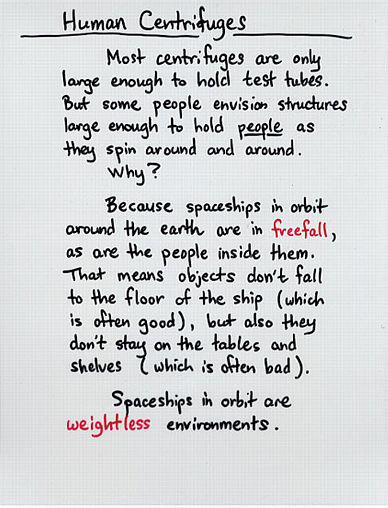

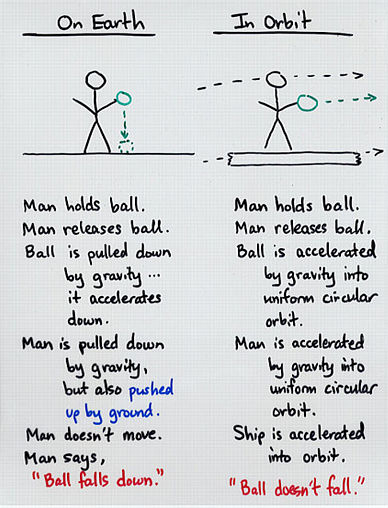
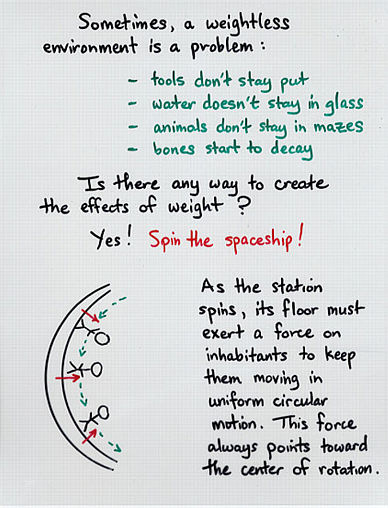
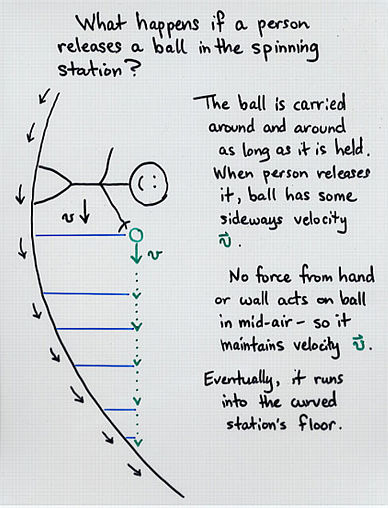
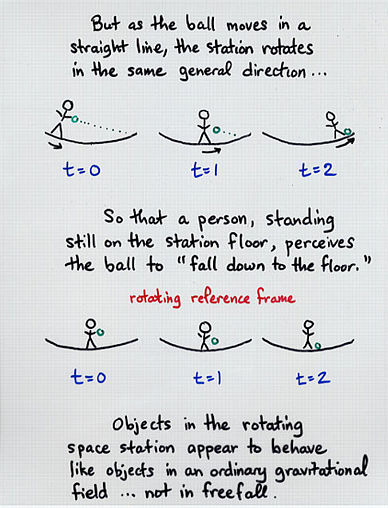
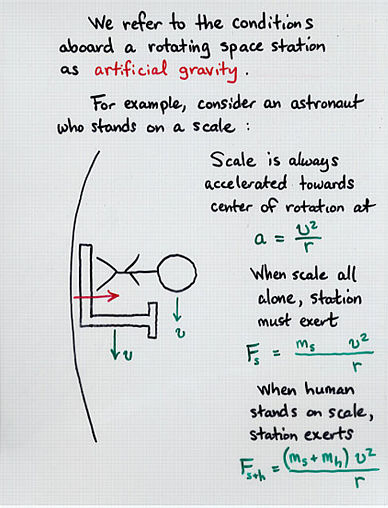
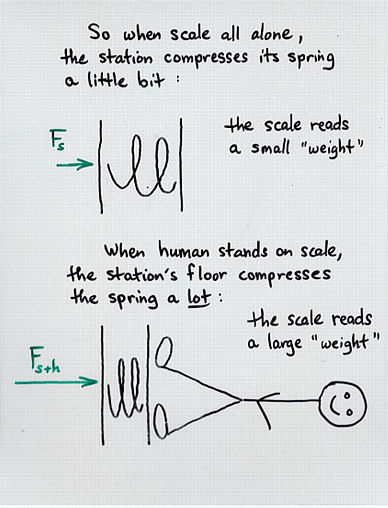
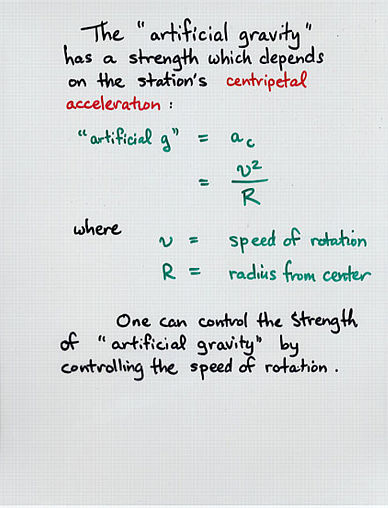
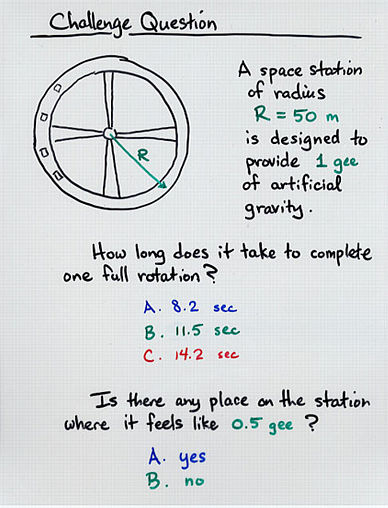
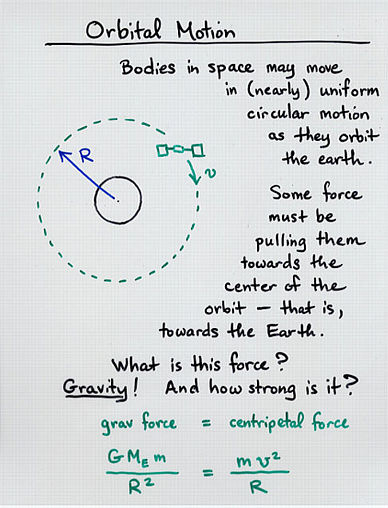
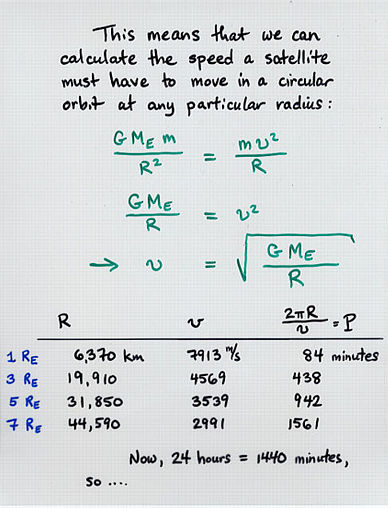
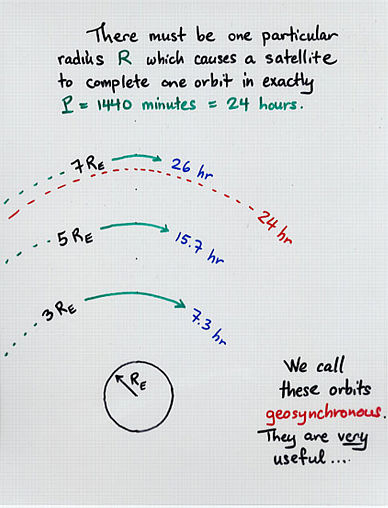
 Copyright © Michael Richmond.
This work is licensed under a Creative Commons License.
Copyright © Michael Richmond.
This work is licensed under a Creative Commons License.













 Copyright © Michael Richmond.
This work is licensed under a Creative Commons License.
Copyright © Michael Richmond.
This work is licensed under a Creative Commons License.